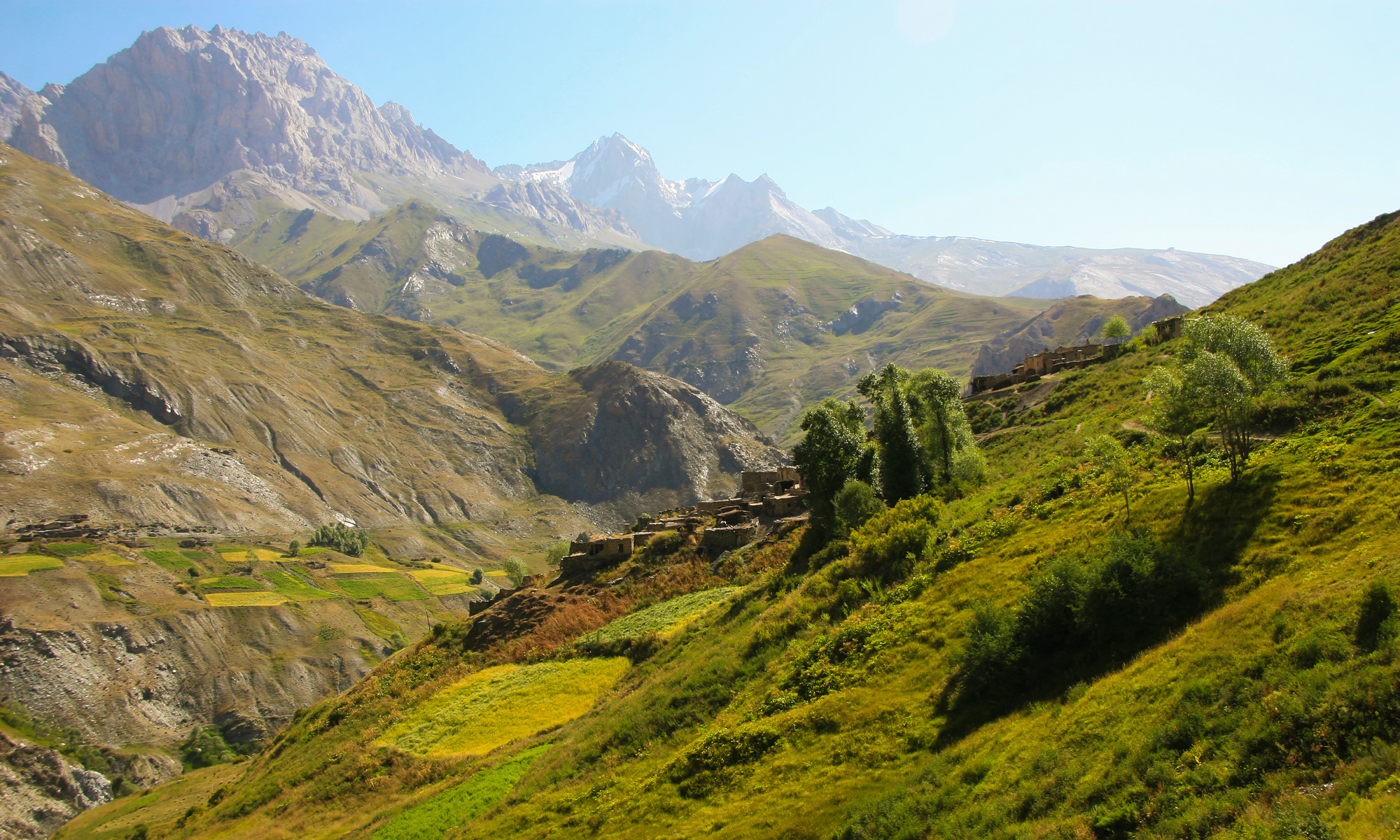In global conversations about sustainable development, the spotlight often turns to innovation: green infrastructure, carbon offsets, policy frameworks. But in the remote Yaghnob Valley of northern Tajikistan, sustainability has long been practiced without labels—rooted not in theory, but in necessity and deep ecological knowledge.
For generations, the Yaghnobi people have lived in this high-altitude landscape through careful stewardship of land, water, and seasonal cycles. In a region shaped by glacial rivers, narrow terraces, and long winters, the question has never been whether to live sustainably—but how to do so with dignity, endurance, and balance.
Traditional homes in Yaghnob are not built on the land—they are built from it. Stone, mud, straw, and locally harvested timber form the backbone of structures designed to endure harsh mountain winters while consuming minimal resources.
These houses are oriented toward sunlight, with thick walls that retain heat and flat rooftops that serve multiple functions: insulating during snow season and drying herbs and grains in summer. Earthen ovens (tanur) are shared across families, minimizing fuel consumption. There are no imported materials, no mechanical heating systems—just what the land offers, used wisely.
Every element serves multiple purposes, reflecting a design ethos shaped by both environmental constraint and communal knowledge.
Agriculture in Yaghnob is a collective act of adaptation. Crops such as barley, lentils, and onions are cultivated on narrow, hand-tilled plots. Irrigation systems, carved from stone and earth, rely on glacial runoff and gravity—not motors or pumps.
Fertilizer comes from livestock waste. Pests are managed without chemicals. Crop rotation is practiced through observation, not mandates. Farming tools are often handmade and repaired repeatedly over decades.
The system is low-impact, but not inefficient. It is finely tuned to the valley’s microclimates and soil conditions—an ecological balance preserved through careful seasonal timing and intergenerational instruction.
When drought strikes or yields fall short, farmers do not overplant or overdraw—they rest the land. Because in Yaghnob, sustainability is not a development goal. It is survival.
In most Yaghnobi villages, the concept of “waste” scarcely exists.
-
Ash is used in cleaning or compost.
-
Water is reused for gardens and livestock.
-
Bones, wool scraps, broken tools—everything finds a second or third life.
-
Soap is sometimes made at home, using traditional methods passed down from elders.
There are no landfills, and rarely trash piles. What cannot return to the earth is often carried back out of the valley by traders or visiting relatives. The environmental footprint is not minimized by regulation—it is minimized by tradition and care.
The absence of centralized electricity has meant limited access to energy—but also a dramatically low carbon footprint. Some homes have small solar panels donated through aid programs. Others use kerosene lamps, candles, or natural daylight.
Daily routines shift with the sun. Nights are quiet. Tasks are planned around available light and seasonal rhythms. While this brings real challenges—especially in winter—it also fosters a slower, more deliberate relationship with time, energy, and effort.
The sustainability of Yaghnobi life is not guaranteed. Climate change is already shifting rainfall patterns and threatening traditional crops. Outmigration—especially among youth seeking education or work—leaves fields untended and knowledge unpassed.
External pressures are also growing. Roads, tourism ventures, and extractive projects risk disrupting delicate ecosystems and cultural cohesion. Without formal recognition—such as the proposed Natural-Ethnographic Park—there is little protection for these traditional lifeways.
Yaghnob is not a blueprint to be copied, but it offers critical insights for the global sustainability conversation:
-
Resource-sharing over consumption
-
Land-based wisdom over extractive growth
-
Community-led systems over centralized solutions
What the Yaghnobi communities model is a kind of deep ecology—an understanding that land, water, and livelihood are not separate spheres, but one interwoven system of care.
Supporting eco-living in Yaghnob does not mean preserving it in stasis. It means amplifying local knowledge with tailored resources:
-
Small-scale agricultural support and seed-saving initiatives
-
Improved access to clean energy (e.g., decentralized solar solutions)
-
Sustainable water management and erosion control
-
Culturally sensitive eco-tourism frameworks
-
Education and training that integrate environmental science with traditional practice
Most importantly, it means listening to the people who have lived this way for generations—and ensuring that their voices shape the decisions that affect their land.
